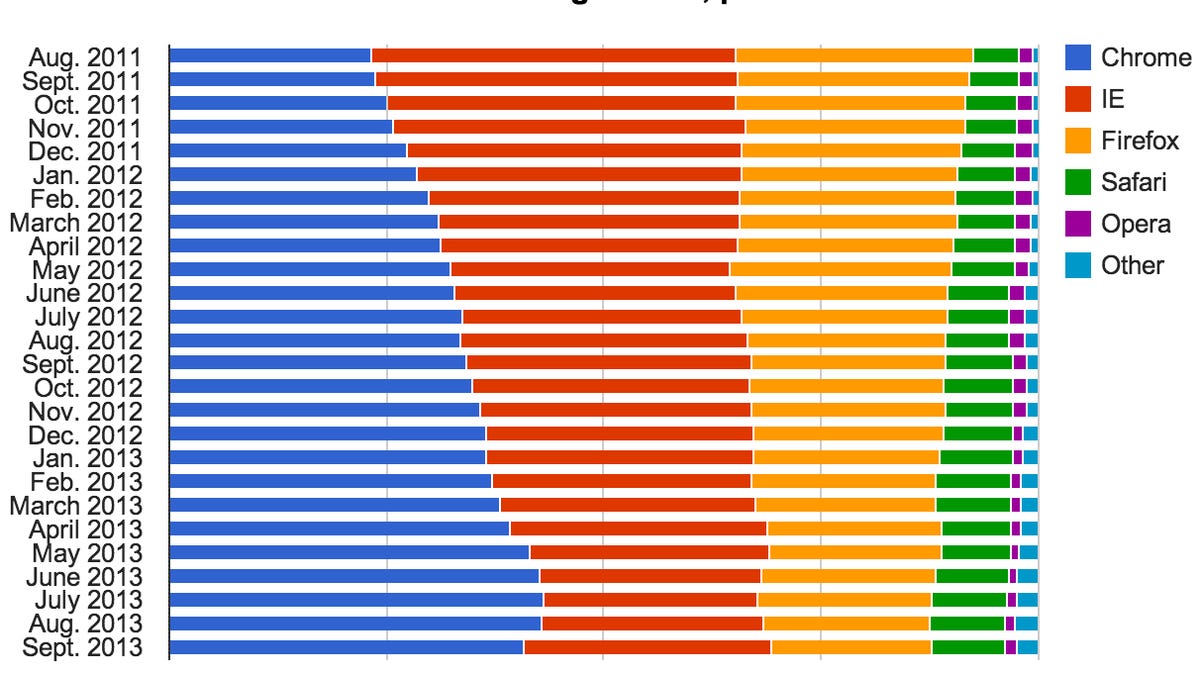IE usage resurges in September, new stats report
StatCounter browser data agrees with Net Applications' earlier findings that Internet Explorer is on the rise.

It's comeback time for Internet Explorer, the browser that languished for years but now is showing renewed vigor in the market as Microsoft revamps it.
Months ago, Net Applications statistics showed IE gaining some ground as measured by daily use among individuals. Now, new data released from StatCounter, which uses a different methodology emphasizing page views, is confirming that rebound.
Net Applications measured IE usage on personal computers growing from 57.6 percent in August to 57.8 percent in September -- not a dramatic change for what it deems the most-used browser. StatCounter's methods put IE in second place, but it surged from 25.6 percent to 28.6 percent.
One possible explanation: As browsers get faster, people tend to load more pages. Microsoft has put a big emphasis on browser performance, such as fast page-load speeds, as people move from IE 8 to IE 9, IE 10, and the new IE 11 that's arriving this month with Windows 8.1 and later for Windows 7. StatCounter's page-load data captures changes in how much people use particular browsers, not just how many people use them.
Also in StatCounter's figures, top-ranked Chrome dropped from 42.8 percent to 40.8 percent, but it maintained its No. 1 ranking.
Among mobile browsers, StatCounter and Net Applications findings are even further apart because of another difference in their methodology. Net Applications includes Android and iOS tablets in its mobile figures, but StatCounter only counts a device as mobile if it's pocketable.
Net Applications gives the top mobile spot to Apple, with Safari claiming 54.2 percent of the usage and the unbranded Android browser in second place at 22.8 percent. StatCounter, though, reverses the places, giving Safari on the iPhone 21.0 percent and the Android browser 28.2 percent. Another 1.5 percent comes from Safari on the iPod Touch.
Both agree that Chrome is rising, though, as an alternative to the unbranded browser Google included with earlier versions of Android. Net Applications showed Chrome's growth from 5.6 percent to 6.3 percent, while StatCounter showed it increasing from 4.3 percent to 4.6 percent
StatCounter also showed a resurgence for Opera on mobile phones, rising from 16.1 percent in August to 16.6 percent in September.

